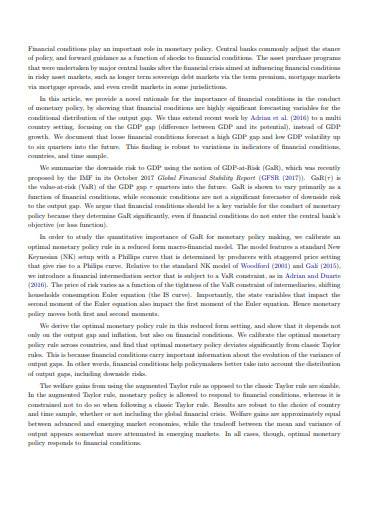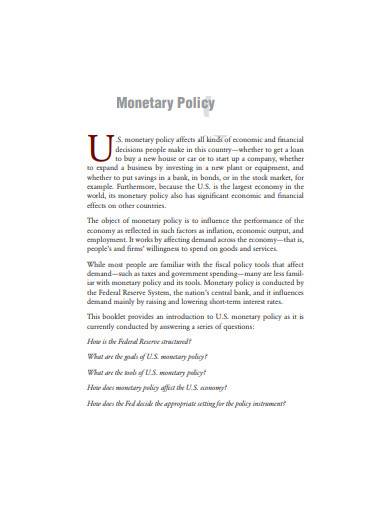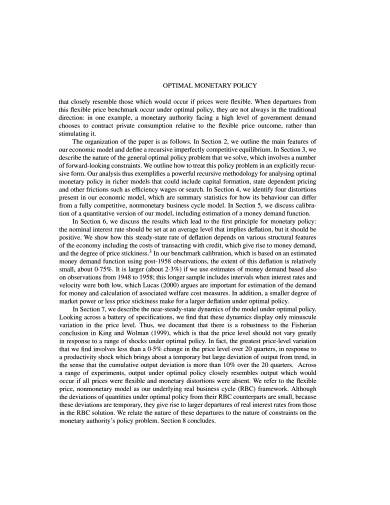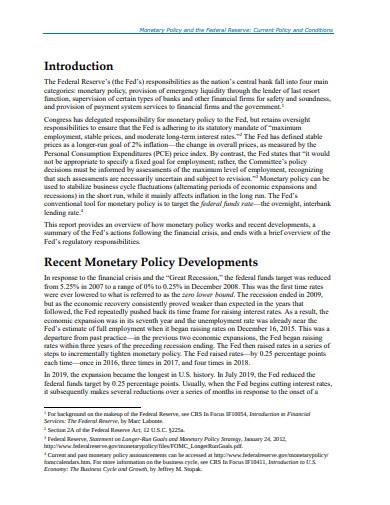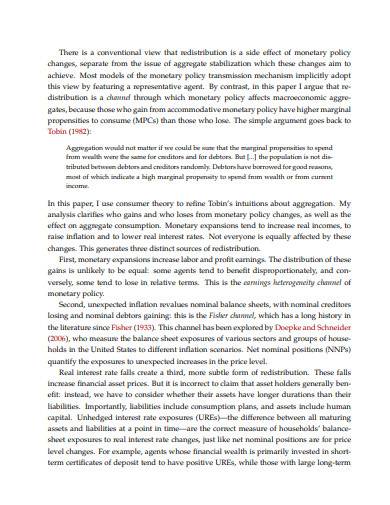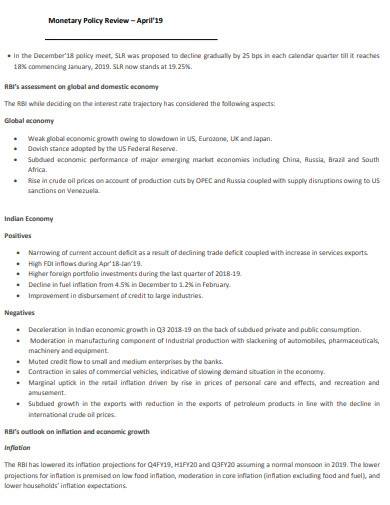Monetary policy among company policy, security policy, and other types of policies are vital to maintaining order. People use these as fundamental factors to use as a basis for managing an organization at all levels. When we hear the word “monetary policy,” most likely, the first thing that comes to mind is money. However, let me ask you a question. Do you know the specific functions that this government agency performs that affect our economy? Let’s discuss more of it in this article.
What is a Monetary Policy
Monetary policy refers to the national policy that a central bank manages to effectively manage the country’s money supply, which is in the form of credit, cash, checks, and mutual funds. The objectives of monetary policy are to manage inflation, reduce unemployment, and stabilize the gross domestic product (GDP).
Types of Monetary Policy
The monetary policy committee implements two kinds of monetary policy to ensure that the organization effectively performs its duties.
Expansionary Monetary Policy
Central banks use this type of monetary policy in managing inflation. For example, if these organizations calculate that inflation will go high in the future, they will reduce the money supply by limiting the amount of money the banks can lend to their clients. Additionally, it commands the banks to charge a higher interest rate. Through these actions, fewer businesses and individuals borrow money, which allows them to slow the growth of inflation.
Contractionary Monetary Policy
Meanwhile, with the contractionary monetary policy, central banks increase the liquidity by providing banks more money to lend and allow them to lessen the interest rates of their products, such as loans. As a result, businesses can borrow the desired amount of loan, allowing them to buy more equipment and hire more employees. It also promotes individuals to easily spend money on products, such as a car, house, appliances, etc., increasing the demands and making economic progress.
6+ Monetary Policy Samples
In the previous sections, we have talked about the monetary policy definition and its types. Now, let’s delve deeper by observing the following examples.
1. Monetary Policy and Financial Conditions Sample
2. Monetary Policy Sample
3. Optimal Monetary Policy Sample
4. Monetary Policy Developments Template
5. Monetary Policy and the Redistribution Channel Sample
6. Monetary Policy Review Sample
7. Models and Monetary Policy in DOC
How Does the Government Control Inflation
Did you know that the U.S. inflation target rate is 2 percent? This percentage has become the inflation target since the 1990s. To meet this target, aside from the monetary policy, the government uses multiple methods. In this article, we will discuss each of the ways that the government uses to ensure that inflation does not negatively affect the country’s economic status.
1. Control of Money Supply
By implementing monetary policy, the government has control over the money supply, which is one of the factors to consider in inflation management. To prevent it from going higher than the intended rate, the central banks decrease the prices of the bonds and increases the interest rates. On the other hand, to avoid hitting lower than 2%, they will increase the bonds’ prices and lower the interest rates.
2. Maintain the Supply-side Policies
Through these policies, the government can effectively boost the country’s competitiveness and efficiency in terms of economic status. This policy has two subcategories, which are the free-market supply-side policy and interventionist supply-side policy. By maintaining these policies, the government can suppress the long-term costs that may create adverse effects on the inflation rate.
3. Govern the Fiscal Policy
The fiscal policy allows the government to make adjustments with its spendings by increasing the tax rates, such as income taxes, suppressing the possible inflation pressures in the future. To materialize its function, monetary policy and fiscal policy work side by side. For example, in 2012, Americans were worried that the possibility of the country’s economy would go back into recession as a result of the simultaneous increase in tax rates and government expenses cuts, which would take effect in the first month of 2013. Luckily, the U.S. Congress passed the American Taxpayer Relief Act of 2012 on Jan. 1, 2013, preventing the problem from occurring.
4. Maintain the Wages
Countries, such as the Netherlands, Sweden, Germany, etc., have applied this action in the past to suppress the inflation rate from expanding. This action, per se, allows the government to influence the wages of the workers. Generally, the U.S. has prevented from using it. However, during World War II and the Korean War, the authorities implemented this program to deal with the inflation issues.
Monetary Policy Tools
To maintain healthy economic growth, central banks use many monetary policy tools. However, the following tools are the ones they usually use.
1. Open Market Operations
Through open market operations, if the central banks implement the expansionary monetary policy, they can buy securities from the private banks, leaving them with lesser money to lend to the clients. Meanwhile, if the central banks have to implement contractionary monetary policy, they will sell the securities to the banks, allowing their banks’ reserves to gain more cash. Meaning, they will have more money to lend to the clients.
2. Reserve Requirement
By imposing the reserve requirements, the central banks have control over the amount of money that the banks can give to the clients. When the central banks implement a higher reserve requirement, by keeping the money to a vault or central bank itself, the banks have lesser money to lend. Take note, though, that central banks do not implement reserve requirement to small banks since they have a lower amount to give in the first place.
3. Discount Rate
Through a discount rate, banks can borrow money from the central bank. Banks avail of this type of product to ensure that they meet the reserve requirement.
Each policy that we use has its distinct characteristics that distinguish its purpose. In this article, we have covered the essential attributes of the monetary policy, which makes it vital, especially to the country’s economic growth. If you are planning to build a policy document for a project, save yourself time by establishing the purpose of the material before you do anything else.
Related Posts
FREE 10+ Plagiarism/Cheating Policy Samples in MS Word | PDF
FREE 50+ Policy Approval Samples in PDF | MS Word
FREE 50+ Planning Policy Samples in MS Word | Google Docs | Pages | PDF
FREE 10+ Related Personnel Policy Samples in MS Word | PDF
FREE 10+ Suspension And Expulsion Policy Samples in MS Word | PDF
FREE 10+ Student Travel Policy Samples in MS Word | Google Docs | Pages | MS Outlook | PDF
FREE 10+ Uniform Complaint Policy and Procedure Samples in PDF
FREE 10+ Bullying Policy Samples in MS Word | PDF
FREE 10+ Fiscal Control Policy Samples & Templates in MS Word | PDF
FREE 10+ Cooperative Policy Samples & Templates in MS Word | PDF
FREE 10+ Disenrollment Policy Samples in MS Word | PDF
FREE 10+ Donation Policy Samples & Templates in MS Word | PDF
FREE 10+ Homework Policy Samples & Templates in MS Word | Pages | PDF
FREE 10+ IT and Software Policy Samples in PDF | MS Word | Pages | Google Docs
FREE 50+ Policy Samples in PDF | MS Word

